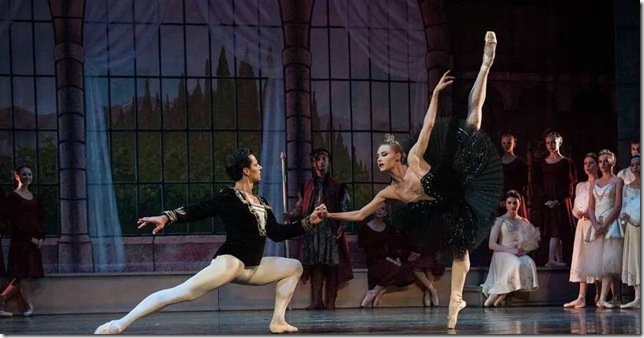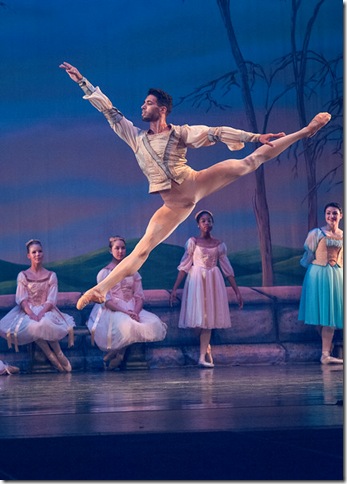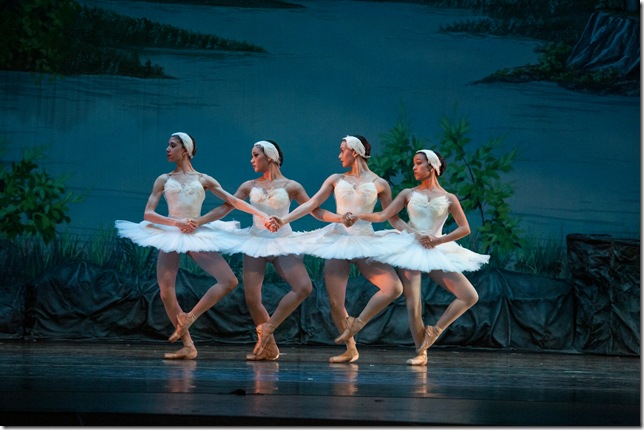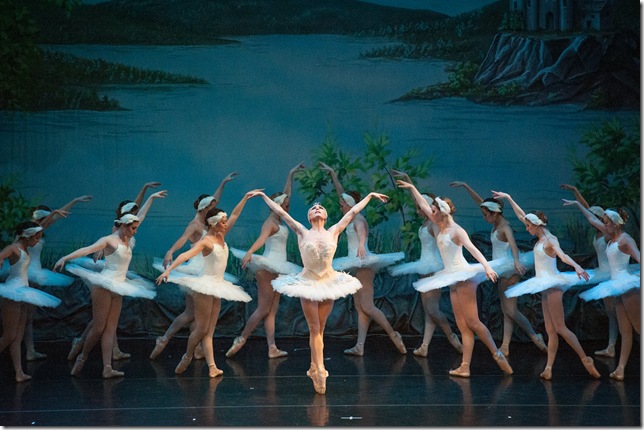It’s too easy to compare the appearance of a major ballerina with a local company to the visitation of a swan, especially when the ballet in question is that of Tchaikovsky.
And it also minimizes the contribution of the company itself, which in the case of Boca Ballet Theatre would be distinctly unfair. But this past Saturday night’s mounting of Swan Lake with New York City Ballet soloist Sara Mearns as Odette had a large house at the Olympic Heights High School auditorium standing and shouting, and it was hard to escape the feeling that something very special had happened.
Mearns, who has been dancing this role since Peter Martins selected her at 19 from the corps at NYCB, was sidelined by a back injury not too long ago, but judging from her performance Saturday night (one of three performances Boca Ballet presented to round off its season) it might never have happened. Her dancing was beautiful, technically pristine and visually riveting from her first entrance.
For the young dancers of Dan Guin and Jane Tyree’s company, it was surely a real-time master class in how athletic precision, stylized poses and compelling music combine to embody the idea of what classical ballet is all about. From her fluttering nervousness and backward steps at her first meeting with Prince Siegfried (another guest, Simon Ball of the Houston Ballet), to her arabesques that seemed to add miles to her legs, to her astonishing, seemingly endless series of pirouettes at the ball, Mearns was graceful motion incarnate, and while the audience was thoroughly ready to applaud her every move, they had good reason to do so.
And while she was graceful, she was also strong and athletic, as well as slightly haughty and chilly. Odette was not a damsel in distress but more of a rare bird, one surprised to be discovered but physically confident and impressive if she hand’t been; she gave the impression of being a tremendous catch for a young man out looking for love, rather than a shrinking violet in need of rescuing. That’s a more modern kind of Odette, and well in keeping with a woman — even one in a fairy-tale Romantic landscape like this one — whom today’s audiences can relate to.
As Siegfried, Ball made a fine partner, always deferring to Mearns and giving her plenty of support, especially in the Black Swan pas de deux. His solo dancing was slightly stiff at first but warmed up, and he was a decent mimetic actor, someone whose work was helpful in enabling the viewer to follow the scenario. He was believable as someone buffeted about by love and duty, and it says something about his skill that he was able to do it so easefully.
His friend Benno was danced by still another guest, Ariel Soto of the Cuban Classical Ballet of Miami, who is a product of the National Ballet of Cuba. Soto is a remarkable physical specimen; his leg musculature is astounding, and his jumps in the first act lifted him up breathtakingly high. He was a gracious colleague for the young women of the troupe, particularly in the Act I pas de trois, and allowed them to shine. He doesn’t have all that much to do after that in this ballet, but I’d love to see him as Tybalt in Romeo and Juliet, say, or another role that could make use of his clearly spectacular energy.
The student corps acquitted itself quite well, especially (and importantly) in the 16-swan opening of Act IV. Guin’s choreography, an adaptation of Lev Ivanov and Marius Petipa’s original, was delicate and careful here, with the girls moving in gently unfolding ways as they lined up in rows and then fanned out into a semi-circle. Some of the other ensemble moments were not as clean or precise, but as this is a school as well as a performing arts organization, what can be said is that every dancer on the stage looked like he or she was giving of their best, and that gave true esprit to the esprit de corps.
Notable, particularly in the Act I pas de trois, was the dancing of corps member Marissa Udine, who was seen to excellent effect in her work with fellow corps member Alexis Hayward and Soto. Udine stood out for her sharp, clean moves and her overall polish and energy, demonstrated too in the way she beamed at the audience when coming downstage. In the popular cygnets’s dance in Act II, which she performed with Hayward, Bailee Cudmore, and Valentina Zurita, Udine had an extra snap and presence that helped make her memorable.
Swan Lake is one of those ballets that could benefit from added visual elements to get the scenario across (there have been productions that mimed Odette’s initial transformation from hominid to anatid over the introductory music; Guin did something like this for his Nutcracker last year, showing families heading to the Christmas party, and it worked well), and the state of computer technology is such that spectacular effects can be done without tremendous cost.
With minimal sets, a concentration on dance as an almost gymnastic exercise comes to bear, which is great for aficionados and students, but a deeper theatrical experience is possible through technology, and a creative use of it by with the smallest company could help delineate the story line for newbies and veterans looking for a fresh take.
In any event, last Saturday’s audience was evidence that Boca Ballet Theatre has created a strong, supportive community for its work, and that’s the kind of development that makes participation in the arts for students so important. Few of the young people on stage will pursue dance as a career, but when they get a chance to look back on it, they’ll remember nights like the one where they danced with Sara Mearns, and the hundreds of excited people that saw them do it.




